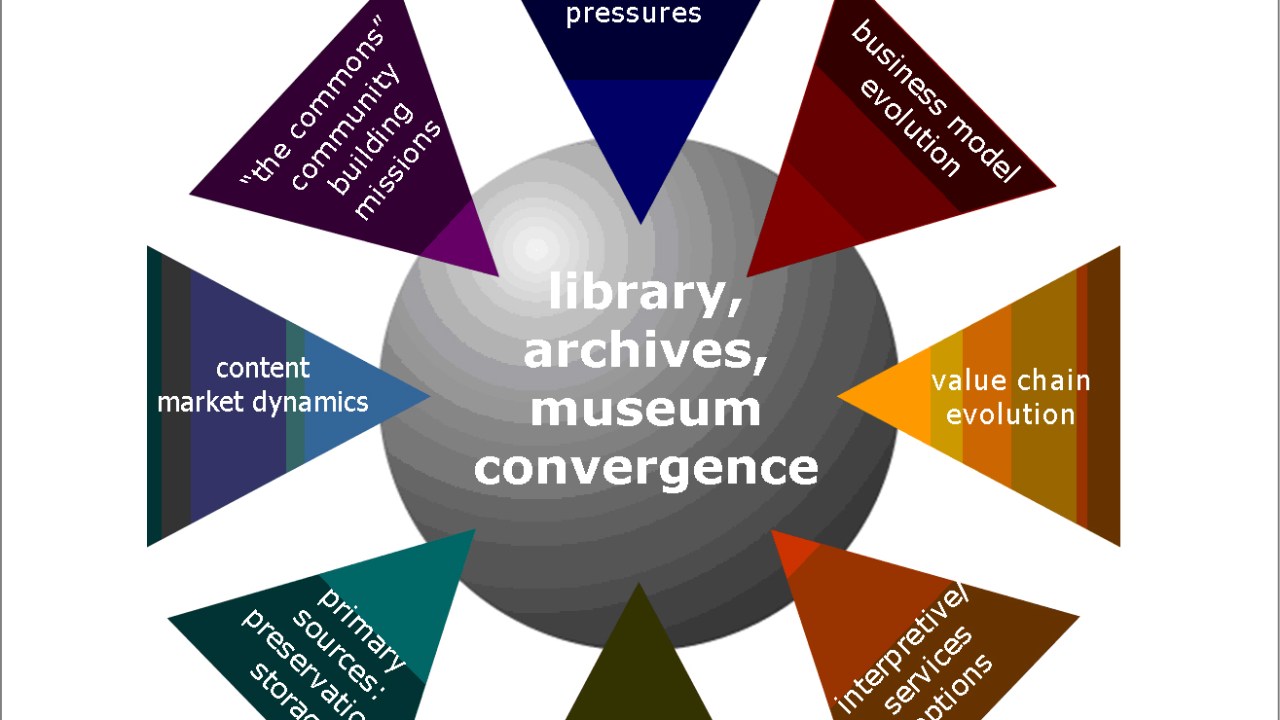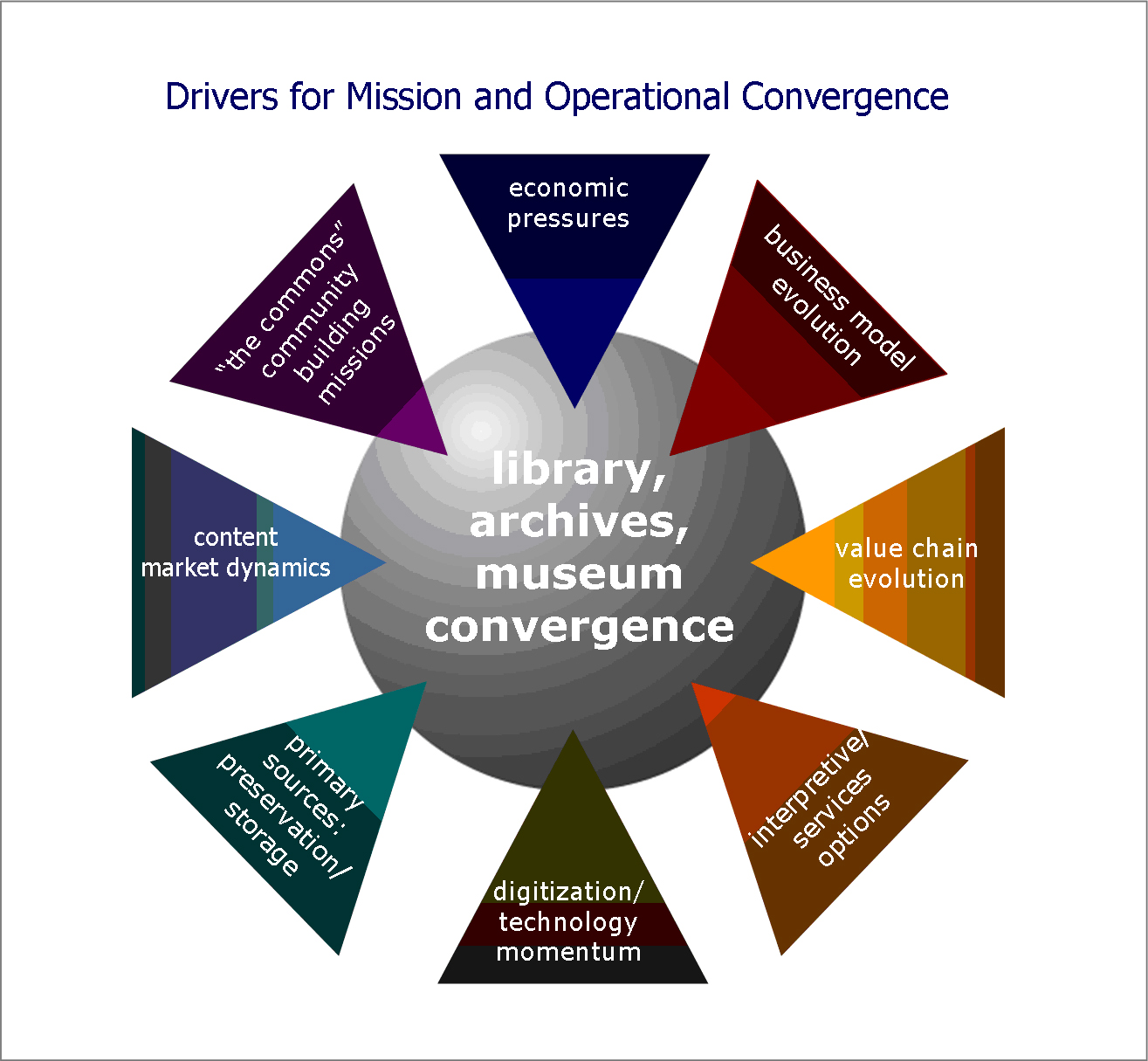
This is the second installment of David Curry’s two-part forecast of the convergence of libraries, archives and museums.
One can certainly argue about whether the set of drivers I discussed in my last post is complete, or whether their descriptions are complete, or even correct.But in drafting that list, another thought occurred to me. One can also see the “library, archives, museum convergence” at the center of this graphic as the wrong focus entirely. 
Convergence may indeed be driven by these factors overall, but, more important, convergence itself is really transitory. It is the “ground” that will pretty much occur, more or less quickly, as these forces and others continue to provide momentum.
It strikes me that the “figure” in all this should really be the last driver I discussed, the one at 11 o’clock in the figure: The Knowledge Commons. This can shift our focus from “market forces” that drive convergence to an energizing rallying point for the future – a future which libraries, archives and museums might well aspire and contribute to, indeed lead.
I believe that in this decade the prospects are good that a secure, accessible, digital, and “free” global knowledge commons – fostering exploration, learning, development, creative activity and innovation – will be built. And, of course, we must be building, in parallel, such commons in local, physical terms, in communities everywhere, to complement to such global aspirations. Aligning our public institutions to helping build this all is a powerful notion.
Such alignment might also galvanize the emergence of a new, integrated professional field – let’s call is knowledge stewardship for the moment – to assure we are nurturing the skills and competencies needed to preserve, interpret, and deliver the content and creative dimensions of these commons.
Seen from this frame of reference, the signs of convergence occurring now across libraries, archives, museum and heritage institutions of all types signal an important evolutionary period as new types of collaborative projects, new business models, and new organizational forms are explored. But they can also be seen as movement along a path toward a larger and vitally important good that is grounded in all our institutions, not an end-game of uncomfortable loss.And the “drivers” can be viewed from a very different vantage: not whether they are affecting the velocity of “convergence” of libraries, archives and museums but how they enable or potentially thwart the building of such “commons” and strong communities – global and local – that will thrive in the future.









還是喜歡這裡-支持你.........................